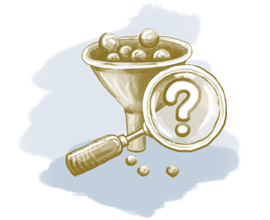 Your Buyers’ Cycle maps out the thought processes and decision-making stages your prospects experience as they make the choice of what and when to buy. Typically there are five stages:
Your Buyers’ Cycle maps out the thought processes and decision-making stages your prospects experience as they make the choice of what and when to buy. Typically there are five stages:
- Sleeping: Here prospects don’t know they have an issue to solve.
- Realisation: Now prospects are aware of an issue and feel motivated to seek out a solution.
- Justification: Here prospects actively investigate and explore the various solutions available to them.
- Decision / Change: Finally, prospects are ready to decide which option to purchase.
- Purchase: Now they want to be reminded they made a sound buying decision and wait to see that promise being delivered.
How an understanding of your buyers’ cycle can accelerate your pipeline
It’s important to know how these five stages show up and align with your sales process. That’s because this information allows you to pinpoint the best sales techniques and tools to help nudge prospects efficiently to the next stage of your pipeline.
A prospect will move from one stage to the next following a trigger. This is an event that causes a buyer to have a clear need or to have made a clear decision which takes them a step closer to becoming a customer.
If you can identify and define the various triggers in your customer’s buying journey, your sales reps can respond quicker when a trigger occurs. Or even better they can proactively create the situation needed to cause such a trigger. As you can see, this proactive approach to selling can accelerate the movement of prospects along your sales pipeline.
Here’s a fictional example to explain what I mean…
Your prospect is blissfully unaware that their IT servers have an underlying security issue (sleeping stage), but then their system gets hacked. The hacking creates the trigger that shifts the buyer from sleep mode into “realisation” – and that marks the start of a buying cycle.
The trigger to move into the justification stage occurs when the prospect realises the detrimental impact being hacked has on his business – and he’ll want to prevent it happening again. He’s now into the justification stage and will actively seek out and research solutions. He may talk with a number of IT suppliers and request demos, compare service specs and prices. He may also turn to social media for feedback on his short-list. When he’s finished his research, he’ll be ready to make a choice – this is the trigger to enter the decision stage. Inevitably one service provider will stand out as the preferred supplier triggering a purchase and closure.
How to apply this to your own sales process
To locate the triggers in your own pipeline, you can look for patterns or interview customers and your sales staff to understand the thought processes and events that trigger a change of behaviour. The following questions may help you.
- What gets your prospect into a serious buying mode?
- What can you do to show a prospect that a trigger has occurred?
- What objections must your prospect overcome before deciding to buy?
- How can you create marketing collateral and sales tools to help your sales reps create a trigger and nudge prospects further along the sales funnel?
How can sales reps respond proactively to each stage of the buyers’ cycle?
Once you’ve defined the triggers in your own buying cycle, the final step is to match up this knowledge with sales tools and techniques designed to proactively influence your prospect’s journey through your pipeline. Your sales playbook will come in handy for that, and to get you thinking, here are some examples of how this works in practice.
During the sleeping stage when prospects are unaware they have a problem, sales activity should focus on education and interruption techniques that describe the problem, press the pain points and wake the customer up to the fact that there’s something they need to deal with. Content including blog posts, eBooks and white papers are an effective way to achieve this.
Once a prospect enters the realisation stage, their behaviour changes. Now they know there’s a problem, the need for a solution emerges. Your organisation can fulfil this need by providing lead bait that introduces and explains possible solutions.
In the justification stage, your prospects will explore the options available to them in more detail. They’ll also start to explore various service providers and may even make contact with you. In response, you can provide printed material, demonstrations and 1:1 consultations to explain how your organisation can service their need.
By the decision / change stage the prospect is ready to make their choice. To help them decide and to increase their confidence in you, provide evidence of the results you can deliver with case studies, testimonials and customer success stories.
Finally, if they do decide to make a purchase with you, ensure you follow up and remind them what a sound buying decision they made. For example, send a stick letter to give your buyer post-purchase reassurance or make a follow up call and invite questions.
As you can see, the key to maximising the efficiency of your sales pipeline is to identify the triggers that influence a buying cycle – and then ensure you’re proactively encouraging them.
How do you use the buyers’ cycle to enhance the efficiency of your sales process? Please let us know in the comments below.











